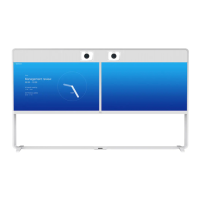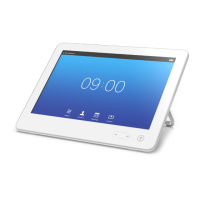D15335.02 Cisco TelePresence MX700 and MX800 API Reference Guide CE8.0, FEBRUARY 2016.
Copyright © 2016 Cisco Systems, Inc. All rights reserved. 23
Cisco TelePresence MX700 and MX800
API Reference Guide
Commands
Commands instruct the codec to execute actions, such as
to dial a number or to search the phone book. All commands
start with the prefix xCommand followed by a command path.
Writing xCommand ? on the command line will list all the top
level commands.
To view the complete list of commands and their parameters,
write xCommand ?? on the command line.
Command arguments are key-value pairs.
When issuing a xCommand, the command consists of one
argument and one required parameter. In this document the
command usage is described for all xCommands, with both
required and optional parameters. The optional parameters
are in brackets.
Example: xCommand Dial Number: 123
• xCommand is the command prefix. The command to be
executed is Dial.
• The example contains one argument, Number: 123.
Number is the key and 123 is its value. The key/value pair
is separated with ‘:’.
Configurations
Configurations are system settings that are persistent across
boots. Like commands, also configurations are structured in
a hierarchy.
Writing xConfiguration ? on the command line lists all the top
level configurations.
Writing xConfiguration ?? lists all configurations and their
value spaces.
Writing xConfiguration lists all configurations and their current
values. To list out only some of the configurations, write
xConfiguration followed by one or more parts of the configu-
ration paths.
Example: Set the H323 Alias ID
Write in:
xConfiguration H323 Profile 1 H323Alias ID:
“changed@company.com”
Example: Get the H323 Alias ID
Write in:
xConfiguration H323 Profile 1 H323Alias ID
Result:
*c xConfiguration H323 Profile 1 H323Alias ID:
“changed@company.com”
**end
Status
A status contains the current state of the codec, such as
connected calls, the status of the gatekeeper registration,
connected inputs and output sources.
Writing xStatus ? on the command line lists all top level
statuses.
Writing xStatus lists all statuses and their current values.
To list out only some of the statuses, write xstatus followed by
the relevant part of the status path (address expression):
xStatus <address expression>

